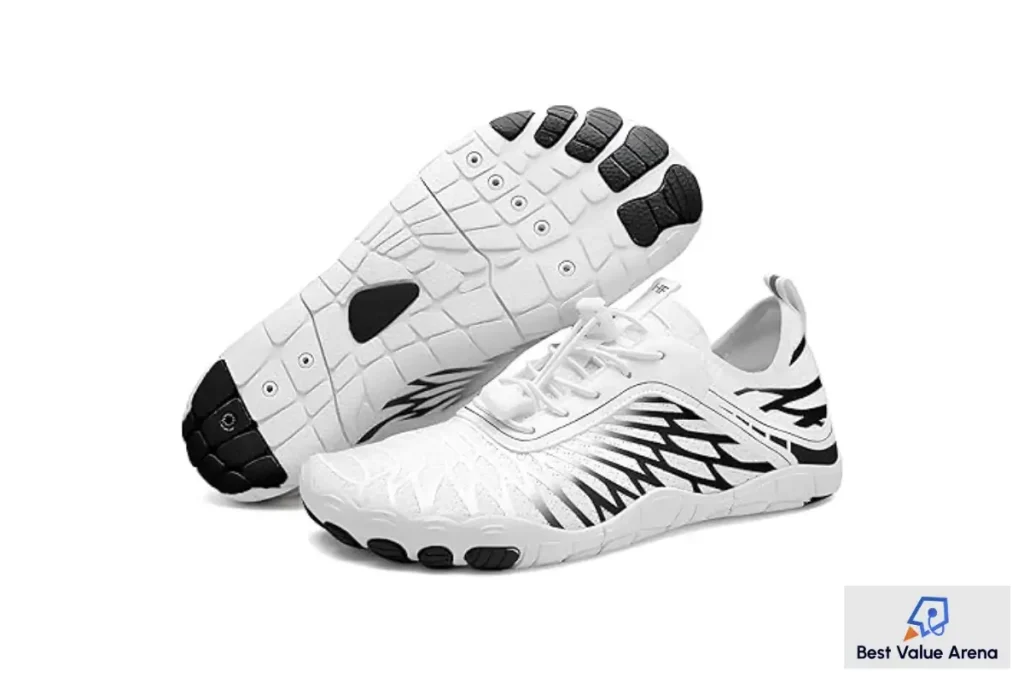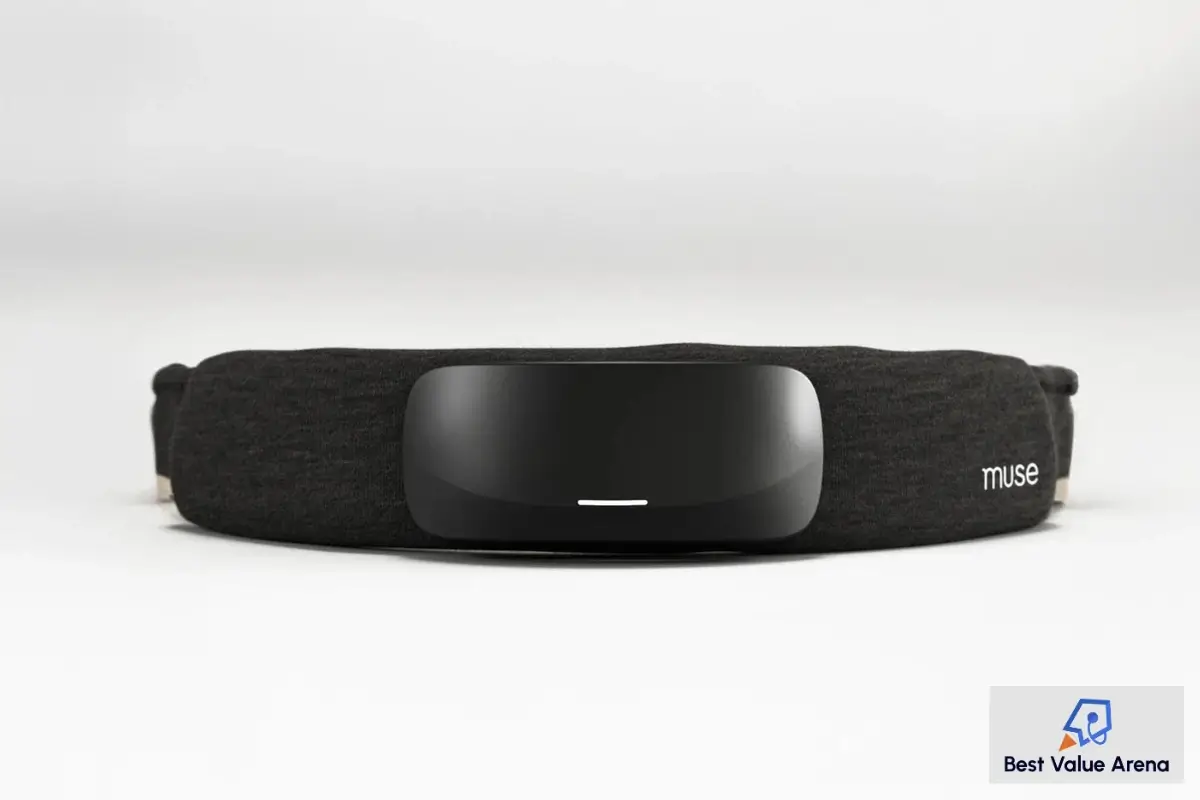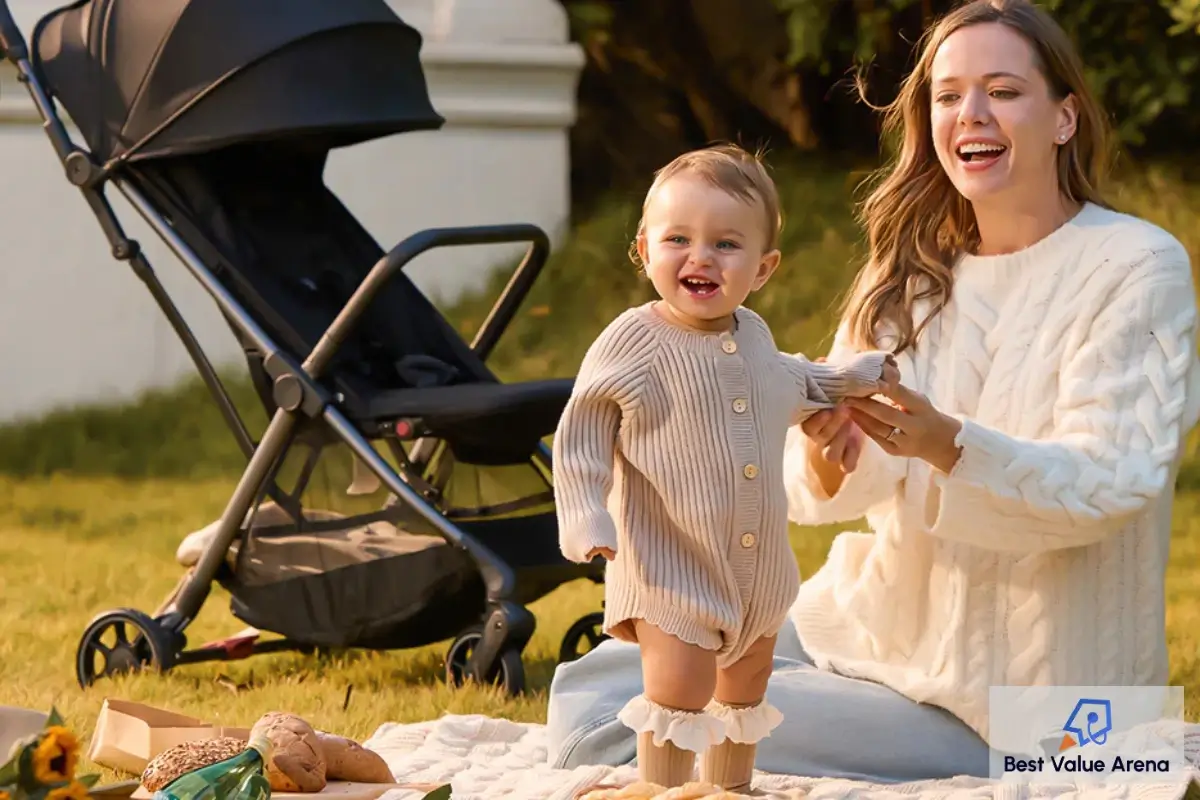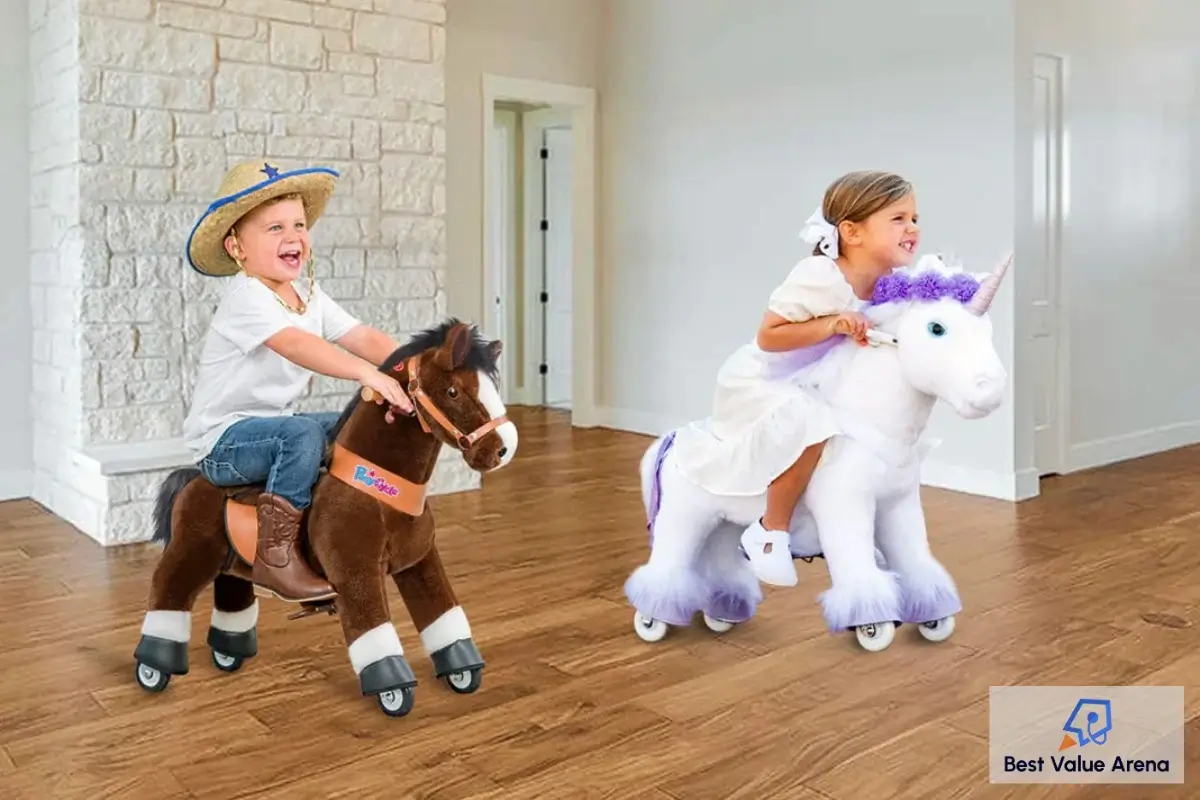The design of traditional shoes across many years has forced our feet into abnormal shapes. The combination of confined toe areas and stiff soles with padded heels has led to weakened foot arches along with poor posture and persistent foot problems.
What if your shoes worked together with your body’s natural movements instead of resisting them? Hike Barefoot Shoes offer a solution. These shoes are trail-ready yet comfortable enough for daily use because they feature a wide toe box and thin flexible soles together with a zero-drop design to promote natural foot movement. Your feet become stronger and your balance improves when you hike with these shoes which makes the experience both more connected and enjoyable. This guide demonstrates how best barefoot shoes enhance your outdoor experiences and improve your health.
How Traditional Footwear Damages Your Feet
Most conventional shoes prioritize cushioning and stability. Despite their initial benefits, these features limit natural foot movement which results in damage over prolonged use.
Narrow Toe Boxes
Most shoes create a tight space that forces toes into unnatural positions by not allowing them to spread out. The restriction causes loss of balance and results in medical problems such as bunions and hammertoes and nerve compression. Wide toe box shoes keep the foot in its natural position which improves stability along with comfort.
Thick, Cushioned Soles
Thick soles offer initial softness but reduce sensitivity to the ground. Lack of foot surface sensation leads to weakened muscles through underuse which raises injury risk.
Elevated Heels
The majority of shoes feature raised heels including those designed for athletic use. Raised heels cause your body to lean forward, which leads to stress on the knees, hips, and lower back as time passes. The alteration in posture leads to long-term pain.
Traditional footwear protects the foot against sharp objects and rough surfaces yet separates you from your body’s inherent ability to adjust and improve strength.
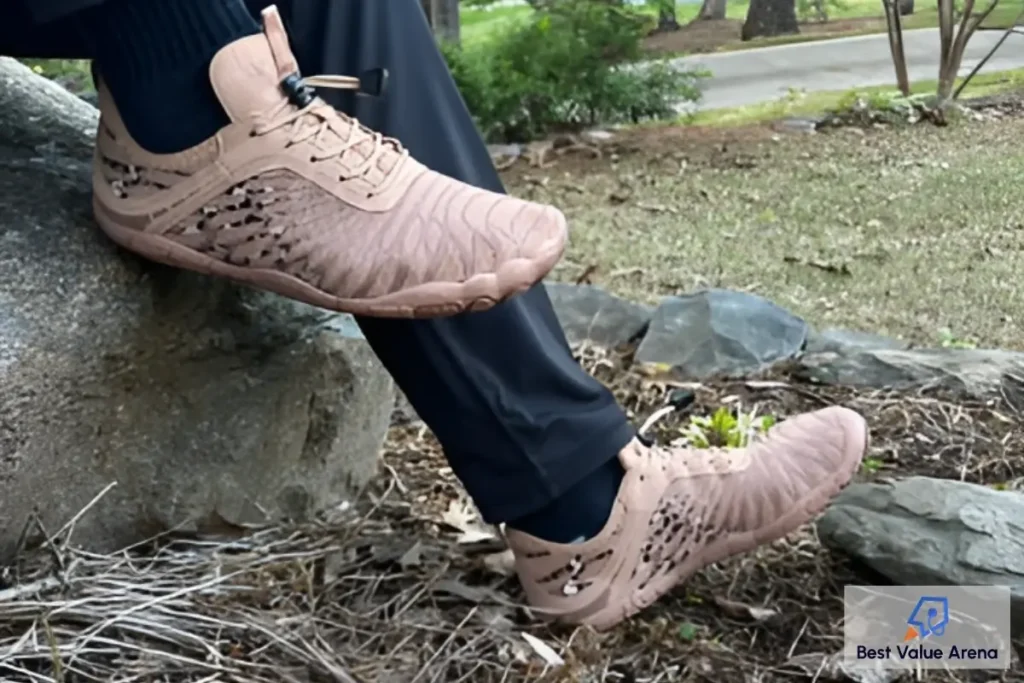
How Barefoot Shoes Restore Natural Function
The construction of Hike Barefoot Shoes corrects foot problems through minimalist design principles while maximizing functional benefits.
Wide Toe Box Shoes for Stability
A wide toe box design enables toes to spread naturally which helps restore your foot’s original support structure. Splaying toes helps maintain balance because they activate foot muscles that stay underused in shoes with tight toe spaces.
Flexible Soles for Strength
The thin and flexible barefoot shoes soles promote sensory feedback from the ground. The act of sensing the ground’s textures and shapes beneath your feet triggers stabilizing muscles which leads to stronger arches. Over time feet build up increased durability through these results.
Zero-Drop Design for Proper Posture
The heel and toe of zero-drop shoes remain at the same height. Maintaining natural body alignment through proper weight distribution helps prevent bodily strain while supporting healthier walking patterns.
3mm Puncture-Resistant Sole for Protection
The tough but flexible sole guards against sharp surfaces and maintains the sensory feedback needed for improved control and stability.
Breathable Construction for Comfort
Lightweight mesh materials improve air circulation which helps maintain dry and cool feet while offering comfort during both adventurous activities and routine daily use.
Scientific research confirms that comfortable barefoot shoes enhance foot strength, proprioception, and stability, helping you move more efficiently on and off the trail.
Performance: Hike Barefoot Shoes vs. Traditional Footwear
Footwear shapes how you move daily. Traditional footwear has stiff, bulky features that restrict natural mobility. Hike Barefoot Shoes focus on freedom, strength, and balance with lightweight, flexible construction.
| Feature | Hike Barefoot Shoes | Traditional Footwear |
| Weight | Ultra-light (around 270g) | Heavy and Bulky |
| Ground Feel | High Sensory Feedback | Minimal Sensitivity |
| Toe Space | Natural Wide Splay | Narrow and Restrictive |
| Flexibility | Moves with Your Foot | Stiff and Limiting |
| Best For | Strength, Agility, Balance | External Cushioning |
Hike Barefoot Shoes build stronger, more resilient feet by working with your body’s natural mechanics, not against them.
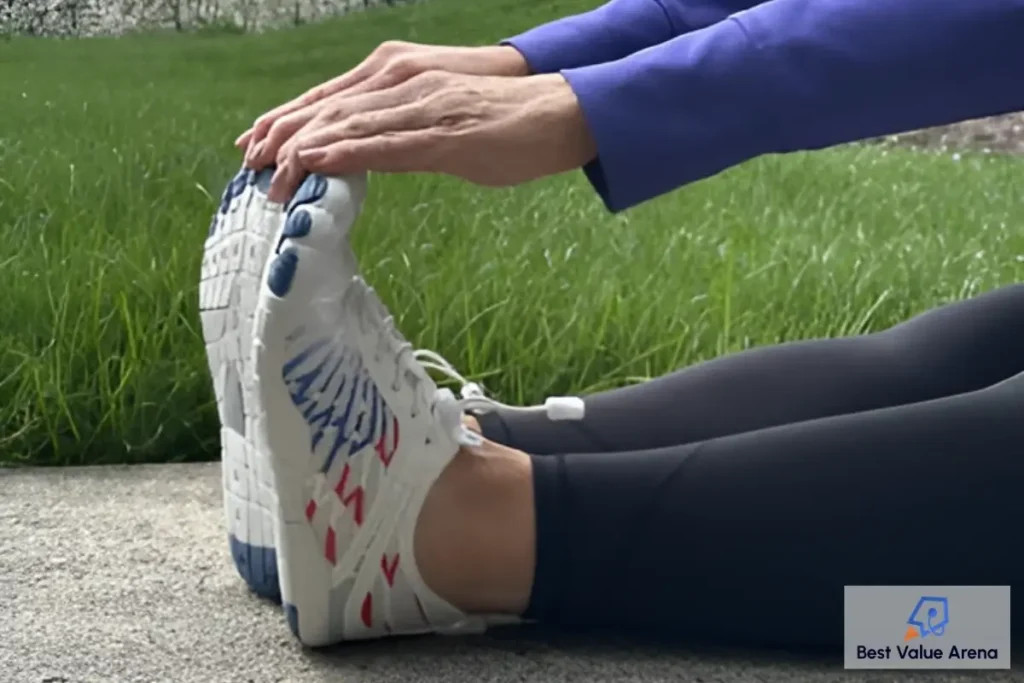
Proven Benefits of Barefoot Shoes
Hike Barefoot Shoes provide numerous powerful advantages that go well beyond mere comfort. These shoes which prioritize minimalism and foot health help rebuild your feet’s natural strength and functionality.
1. Strengthens Foot Muscles
Traditional shoes’ overly supportive design weakens the muscles in the feet. Hike Barefoot Shoes enable every foot muscle to participate actively during walking. Extended use of these shoes leads to stronger foot arches alongside better ankle stability and increased foot strength.
2. Reduces Risk of Common Injuries
Foot mechanics that lack strength can cause injuries including plantar fasciitis, shin splints, and bunions. Barefoot shoes prevent foot issues by encouraging natural movements while strengthening foot muscles.
3. Enhances Balance and Coordination
Hike Barefoot Shoes’ ultra-thin sole provides superior ground feedback which enhances the body’s proprioceptive abilities for positioning and movement. The increased awareness from wearing Hike Barefoot Shoes provides better stability and control when moving across uneven surfaces.
4. Supports a Natural Gait
When footwear lacks elevated heels and excessive padding it allows your feet to shift to a healthier midfoot or forefoot strike pattern. The efficient gait design reduces joint stress while promoting proper posture and optimizing movement energy consumption.
Hike Barefoot Shoes advance beyond trail companionship by enhancing alignment and decreasing pain while building body resilience during daily activities.
Transitioning to Flexible Barefoot Shoes by Hike
You need to move slowly towards using Hike Barefoot Shoes to gain the best outcomes. Begin your barefoot shoe transition with brief walks on flat surfaces to give your feet time to adapt. Use toe spread exercises, calf raises, and balance drills to strengthen essential foot muscles. Once your foot strength improves, move onto terrain such as dirt paths, grassy areas and technical trails. The progressive transition helps minimize discomfort as your muscles adjust which allows you to experience all the advantages of barefoot movement.
Conclusion: The Power of Barefoot Movement
Hike Barefoot Shoes deliver a revolutionary footwear experience through the integration of natural movement patterns alongside enhanced foot health. The shoes provide body alignment restoration through their wide toe box design while increasing strength and preventing typical foot injuries by using flexible soles and zero-drop construction. Hike Barefoot Shoes deliver exceptional comfort and support through their minimalist design which makes them perfect for both trail enthusiasts and daily wearers. Embrace the benefits of barefoot shoes and experience a more natural, balanced stride in every step.

